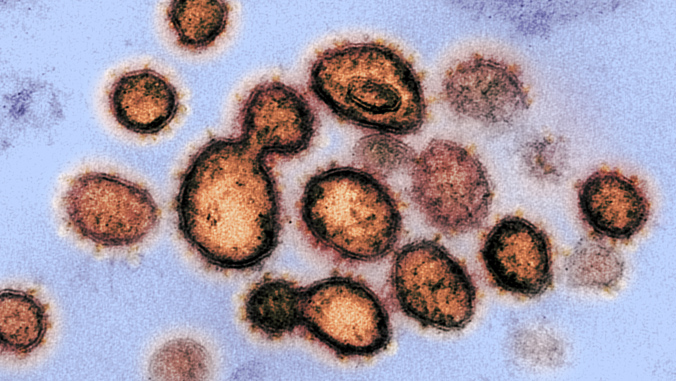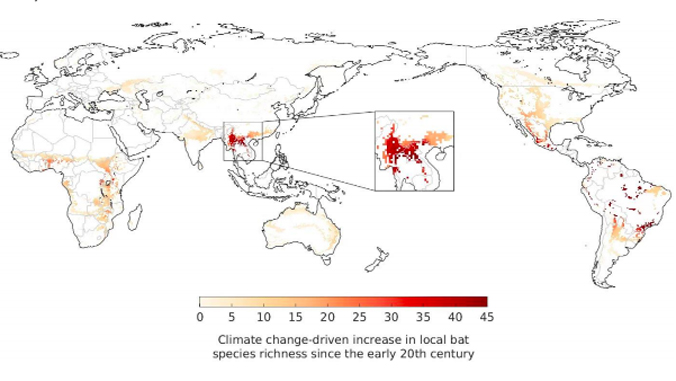
Global greenhouse gas emissions over the last century have made southern China a hotspot for bat-borne coronaviruses, by driving growth of forest habitat favored by bats. That's the finding of a new study published in Science of the Total Environment by a team of researchers, including Camilo Mora from the University of Hawaiʻi at Mānoa. It provides the first evidence that climate change could have played a direct role in the emergence of SARS-CoV-2, the virus that caused the COVID-19 pandemic.
The study revealed large-scale changes in the type of vegetation in the southern Chinese Yunnan province, and adjacent regions in Myanmar and Laos, over the last century. Fueled by climatic changes including increases in temperature, sunlight and atmospheric carbon dioxide—which affect the growth of plants and trees—these habitats have changed from tropical shrubland to tropical savannah and deciduous (trees and shrubs that seasonally shed leaves) woodland. This created a suitable environment for many bat species that predominantly live in forests.
The study found that the number of coronaviruses in an area is closely linked to the number of different bat species present. An additional 40 bat species have moved into the southern Chinese Yunnan province in the past century, harboring around 100 more types of bat-borne coronavirus. This "global hotspot" is the region where genetic data suggests SARS-CoV-2 may have arisen.
The study suggests that as climate change altered habitats, species left some areas and moved into others—taking their viruses with them. This not only altered the regions where viruses are present, but most likely allowed for new interactions between animals and viruses, causing more harmful viruses to be transmitted or evolve.
"The fact that climate change can accelerate the transmission of wildlife pathogens to humans should be an urgent wake-up call to reduce global emissions," said Mora, an associate professor of geography in the College of Social Sciences.
"Understanding how the global distribution of bat species has shifted as a result of climate change may be an important step in reconstructing the origin of the COVID-19 outbreak," said lead author Robert Beyer, a researcher in the University of Cambridge's Department of Zoology and research fellow at the Potsdam Institute for Climate Impact Research, Germany.
The researchers echo calls from previous studies that urge policymakers to acknowledge the role of climate change in outbreaks of viral diseases, and to address climate change as part of COVID-19 economic recovery programs.
This research was supported by the European Research Council. It is an example of UH Mānoa's goal of Excellence in Research: Advancing the Research and Creative Work Enterprise (PDF), one of four goals identified in the 2015–25 Strategic Plan (PDF), updated in December 2020.







